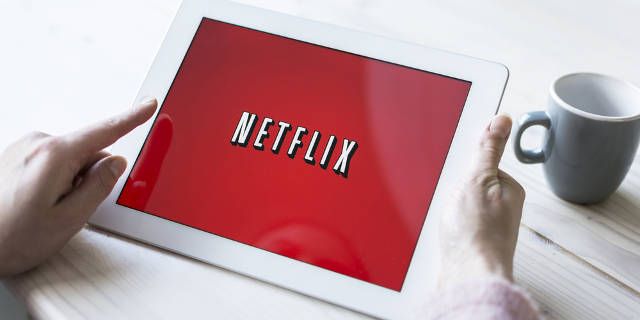Tired of seeing all of your income go towards bills and expenses? You aren't alone. In 2009, the average American household spent about 55% of their post-tax income on housing, transportation, and food alone.
When you include other necessities (e.g. clothing, insurance, healthcare) and general recreation (e.g. vacations, entertainment), that number skyrockets to somewhere around 70%. And this is just the average household, which means there are plenty who fare even worse.
But here's the good news: with a little bit of effort, know-how, and determination, you can slash that number and reclaim the money that's rightfully yours. Are you ready to have more money in your pocket?
Install Budgeting Software
Before you can productively cut down your household expenses, you have to figure out where all of your money is going. If you're unknowingly spending over $1,000 a month on food just for yourself, it's more prudent to focus on that rather than trying to optimize a few dollars on gas or electricity.
You could do this by hand, but the easiest way would be to install some budgeting software. Don't let that scare you! It's not as scary as it sounds.
Many people think that "budget" implies massive spreadsheets and overwhelming amounts of math. And while it's true that budgets do involve spreadsheets and math, the amount of work you have to do is much easier than you think. You can have a functional budget ready to go in less than a hour.
Simply put, all you have to do is track how much money is coming in every month (e.g. paychecks, alimony) and how much money is going out every month (e.g. bills, takeout, Starbucks). The keyword here is track. Most people underestimate how much they actually spend on things here and there.
We highly recommend You Need A Budget, which is available for $60 but has a 34-day free trial. Read our review of YNAB to see why we love it so much. But if you don't want to pay for a budget, consider using the Mint spending tracker or making a budget in Excel. Both of those options are completely free.
Lastly, consider installing some useful finance mobile apps like Expense IQ or Mvelopes. You'll be surprised by how much they can help you maintain control over your spending habits.
Switch to a No-Contract Mobile Plan
Another huge money sink for many American households is cellular service. Not long ago, the average household bill for cellular service in the U.S. ranged between $120 and $148 per month for the Big Four providers: Verizon, Sprint, AT&T, and T-Mobile.
Add in the fact that most people upgrade smartphones at least every two years and that cost goes up even higher.
Switch to a no-contract MVNO plan instead! An MVNO is a Mobile Virtual Network Operator, which is just a fancy term for an alternate provider who rents infrastructure from a bigger provider but operates independently in terms of plans and rates.
Why should you switch? Because MVNOs can save you money. Not only that, but you won't be locked into any contracts so you're free to switch providers whenever you want. Cheaper and more flexible? You bet. And there are several other reasons to switch, too.
In fact, with a money-saving mobile plan from Republic Wireless or Ting, you could end up spending as little as $10 per month for a fully functional smartphone. These plans use Wi-Fi instead of data whenever possible to save you tons of money.
Or you could go to the extreme and sign up with FreedomPop, which offers a 100% free mobile service that provides 200 minutes, 500 text messages, and 500 MB of data every month.
And while we're on that topic, try to reduce your data usage as much as possible. Not only will you save on overage fees, but you'll be able to switch to a smaller data plan where the monthly savings are significant.
Cut the Cord & Use the Internet
Last year, the average American household spent $86 per month on cable television, which amounts to a whopping $1,032 every year. Combine that with the fact that most households already have high-speed Internet and the conclusion is clear: it's time to cut the cable cord.
What would you do with an extra thousand dollars every Christmas?
There are many benefits to cutting the cord, but money is the biggest reason for most folks. All you have to do is replace cable television with a few TV streaming services like Netflix, Hulu, and Amazon Prime. Those are the three subscriptions I have and I've yet to exhaust all of the available shows and movies.
At $25 per month for more on-demand media than I can even stomach, cutting the cord became one of the best decisions I've made in the last few years. Plus, I get to take advantage of all the hidden benefits of a Prime membership.
Admittedly, the transition can be a bit difficult for some, especially if vegetating in front of a TV has been part of your daily routine for many years. But follow our guide to cutting the cord and you'll be thanking yourself in no time.
Kill All Unnecessary Subscriptions
We just advocated switching from cable television to online streaming services, but really ask yourself if you even need those online streaming services. Can you live without them? Great! Now you can save yourself even more money.
Digital subscriptions are another big cash sink, especially amongst the younger generation. A $5 subscription might not seem like a big deal, but when you have ten or twenty of them, it adds up. Fast.
The immediate one that comes to mind is Amazon Prime. It's awesome, I know, but it's not really worth it if you only buy something once every few months. Or worse: if you end up buying more stuff just because you have a Prime membership. Is it tempting you to be an impulsive online shopper? Then cut it.
Entertainment subscriptions can be another big cost. Consider cutting magazine memberships and start reading magazines online instead. Switch from pay-to-play MMORPGs to free-to-play MMORPGs. Ask yourself if you're reading enough to make that eBook subscription service worthwhile.
"Box subscriptions" are a recent trend that can drain your wallet if you aren't careful. For example, Naturebox and Mistobox will send you crates of snacks for $20 per month while Barkbox sends dog supplies for $30 per month. Convenient? Sure. Cost effective? Maybe not.
And definitely cut ties with meal delivery services like Blue Apron and Plated. These are wonderful as luxuries, but at $10 per meal, they can cost you hundreds of dollars a month if you aren't careful.
Check Coupon and Sales Sites
Couponing is a tried-and-true method for cutting down costs. You don't have to go off the deep end and spend hours every day collecting every snippet you can find. But if you aren't looking for coupons at all, then you're missing out on a lot of savings.
There's a healthy middleground that you can walk.
Start with Groupon. Some people view Groupon as an insecure wasteland full of scams and fraud. Others think Groupon is the next best thing since tabbed browsing. Neither are true. It's useful, but only if you know how to use Groupon for real value. If you aren't discerning, it could be counterproductive.
FatWallet and SlickDeals are your friends. Not only do they provide time-sensitive updates on coupons and sales, but their communities are smart and informed when it comes to separating real deals from not-so-great ones. Use them and you'll come out a winner.
If searching for coupons is not your cup of tea, why not let the coupons come to you? Here's how to track deals using RSS feeds and IFTTT. Or you can use a service like Promofly which brings the coupons directly to you.
There's a lot to be said about this topic, so check out our guide to online couponing for more tips on maximizing the value of your online purchases.
One huge caveat: Coupons and sales only save you money if you were already going to buy it whether it was on sale or not. Never buy something just because it's on sale! This is a trap that will end up costing you in unnecessary purchases.
Instead, maintain a list of things that you will eventually need to buy. If a sale or coupon ever pops up, then you can stock up and save money in doing so.
Invest in Smart Home Automation
Smart home automation is all about making your life more convenient by taking advantage of advanced device interconnectivity. For example, security cameras that automatically turn on when nobody is home.
Admittedly, a lot of smart home devices are either gimmicks or wholely unnecessary. Do you really need a sprinkler that stays off when it knows that it will rain later that night? Maybe if you're a gardening enthusiast. Otherwise, you should probably skip over it.
But there are a couple of smart home features that can make your life easier and save you money in the process.
For example, smart home thermostats can regulate home climate control in ways that accommodate your personal preferences while optimizing energy usage (e.g. shutting off when nobody is home or when people are sleeping).
Smart outlets are another product worth looking into. Basic ones allow you to turn outlets on and off from afar using your smartphone, but more advanced ones like the Belkin WeMo Insight can track how much energy you're using and automatically shut off when devices aren't in use.
If you own your own home, you should also invest in a few moisture and humidity sensors. By detecting water leaks and alerting you when humidity is too high, they work as preventative measures against broken pipes and rotting wood -- both of which can be costly to repair.
If you're worried about upfront costs, don't worry. As long as you're mindful about what you buy, smart homes actually aren't that expensive.
Start Cooking Your Own Meals
One of the most effective ways to cut down on spending is to start cooking your own meals every day. You might be one of many who are intimidated by this idea, but rest assured: your kitchen fears are conquerable.
In the past, we've explored various options for learning how to cook online for free. All you have to do is pick one or two, take a deep breath, and take the plunge. Stick with it for a couple of weeks and soon enough your meals will taste better than takeout -- and cost a fraction of the price!
Of course, cooking takes more time than ordering delivery, but you can shave off a lot of unnecessary shopping time by planning your meals in advance and doing your shopping all at once. Or even better, cook meals in bulk so you only have to cook once or twice a week.
Personally, I used to spend over $500 per month on food for myself. Now that I cook in bulk regularly, it costs me less than $200 per month and I'm healthier. That's a win-win, if you ask me.
You Can Save Hundreds Every Month
Congratulations! You've just completed a crash course on basic personal finance and should be well on your way towards saving hundreds of dollars every month. That wasn't so hard, was it? Money management is easy once you get the hang of it.
But before you go spending all of that saved money on luxuries and frivolities, we highly recommend that you first get yourself out of debt. Nothing will save you more money than killing high-interest debt once and for all.
What's your biggest struggle in managing household expenses? Do you have any tips or tricks that you can share with us? Tell us in the comments below! We'd love to hear from you.
Image Credits: Mobile Phone by Pan Xunbin via Shutterstock, Netflix Tablet by Twin Design via Shutterstock, Magazine Rack by Niloo via Shutterstock, Coupon Clipping by Igor Kisselev via Shutterstock, Cooking Preparation by Yeko Photo Studio via Shutterstock






